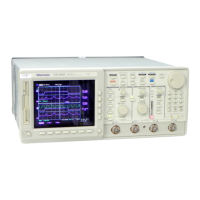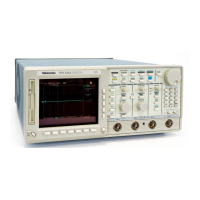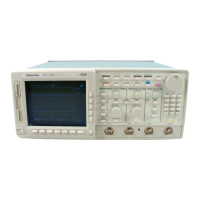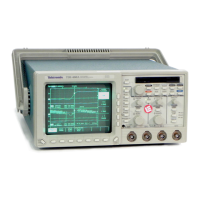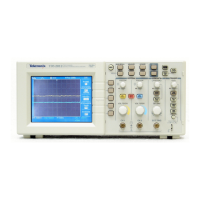Using Features for Advanced Applications
3–166
TDS 500B, TDS 600B, & TDS 700A User Manual
Window Characteristics. When evaluating a window for use, you may want to
examine how it modifies the FFT time domain data. Figure 3–94 shows each
window, its bandpass characteristic, bandwidth, and highest side lobe. Consider
the following characteristics:
The narrower the central lobe for a given window, the better it can resolve a
frequency.
The lower the lobes on the side of each central lobe are, the better the
amplitude accuracy of the frequency measured in the FFT using that
window.
Narrow lobes increase frequency resolution because they are more selective.
Lower side lobe amplitudes increase accuracy because they reduce leakage.
Leakage results when the time domain waveform delivered to the FFT
function contains a non-integer number of waveform cycles. Since there are
fractions of cycles in such records, there are discontinuities at the ends of the
record. These discontinuities cause energy from each discrete frequency to
“leak” over on to adjacent frequencies. The result is amplitude error when
measuring those frequencies.
The rectangular window does not modify the waveform record points; it
generally gives the best frequency resolution because it results in the most
narrow lobe width in the FFT output record. If the time domain records you
measured always had an integer number of cycles, you would only need this
window.
Hamming, Hanning, and Blackman-Harris are all somewhat bell-shaped widows
that taper the waveform record at the record ends. The Hanning and Blackman/
Harris windows taper the data at the end of the record to zero; therefore, they are
generally better choices to eliminate leakage.
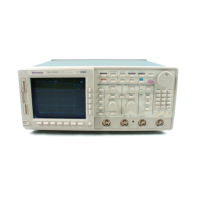
